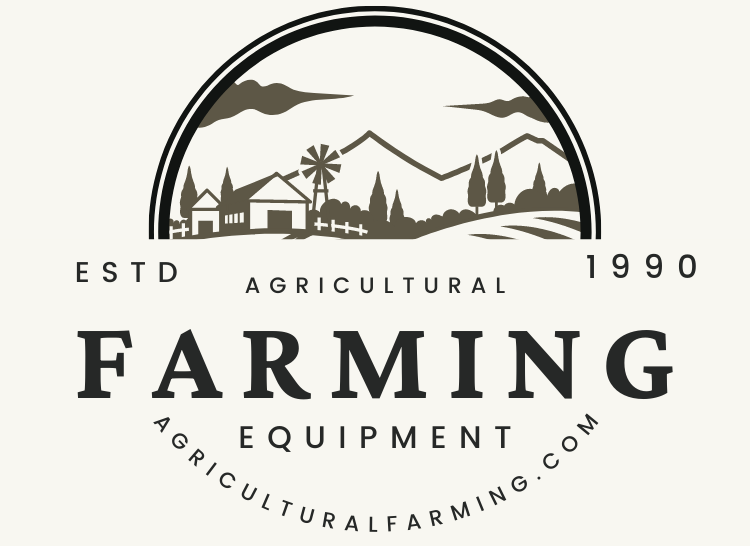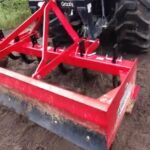Farming requires innovation. Unique problems crop up all the time on the farm, and they require unique solutions; a hay wagon is a versatile piece of equipment that, though often overlooked, is quite handy for important tasks.
A hay wagon is one of the heavy lifters amongst the equipment used at a farm. Besides holding a whole lot of bales on a load, some wagons have removable walls built for the wagon-bed to carry oats and ear corn at harvest time.
As you can see, a hay wagon is an essential addition to your farming gear, particularly if your property exceeds a certain size. Continue reading to discover everything you need to know about hay wagons and how these can help you increase your productivity.
Hay Wagon Brief History
The Spoke wheel for hay wagons was introduced around 1000 B.C. They are much lighter and last longer.
Ummo luebben circa invented the hay wagon. Invented around 2500 B.C. with solid wheels, the wheels were heavy and broke rapidly. The hay wagon has had some developments, the tires, spindle, and front axle have all been developed and improved.
Hay Wagon FAQ’s
What is a farm wagon called?
A wagon was formerly called a wain, and one who builds or repairs wagons is a wainwright. More specifically, a wain is a type of horse- or oxen-drawn, a load-carrying vehicle used for agricultural purposes rather than transporting people.
What is a hay wagon?
The hay wagon is a wagon used to carry hay, but this is not its only use. The hay wagon could transport goods, commodities, agricultural materials, supplies, and sometimes people. Large wagons are helpful for so much more than their purpose of transporting hay.
What is a hay wagon used for?
Hay wagons can be used to transport debris, move corral panels, harvest food from trees, and many other things. It’s mostly farmers who use hay wagons.
What is the difference between a wagon and a carriage?
Is that carriage is the act of conveying, carrying while the wagon is a four-wheeled cart for hauling loads.
How many bales of hay does a wagon have?
You can haul between 225 to 300 bales per load if you want. Fully stacked, they will take 300 bales, but the 8-ton running gears don’t like that very well unless they are well maintained.
How big is a hay wagon?
Classic flatbed hay wagons with oak or steel floors, in 18′ or 22′ lengths. For centuries now, hay wagons have been one of the essential pieces of farm equipment. And since the advent of baling, flatbed wagons have been the go-to for farmers around the country.
How many square bales can you fit in a truck bed?
You should be able to fit three bales in the section closest to the truck cab facing the same direction as the travel because of the wheel wells, have one bale facing perpendicular to travel behind the front area, and then with the tailgate down fit four more in the same orientation as the front section for the back.
What are other uses of a hay wagon?
- Transport Debris. Aside from moving hay, transporting debris is the most frequent use for my hay wagons. By debris, we mean tree debris; branches, trunk sections, stumps, you name it. There’s always plenty of debris on a farm full of trees to clean up and carry away.
- Move Corral Panels. Imagine you need to move a dozen corral panels to a lengthy distance, so rather than carrying them by hand, you can load them onto a hay wagon instead. There are a couple of ways you could arrange the load, such as laying the panels flat across the wagon platform and tying them down. You could also arrange them in their upright position, tying the panels to the sides of the hay wagon so that they wouldn’t tip over. After that, moving them across the farm will be a piece of cake.
- Harvest Fruit from Trees. By driving the wagon alongside full-sized mature fruit trees, you can stand on the wagon to gain a height boost that will help you reach more of the fruit. Throw in a fruit picker with a telescoping pole, and you’ll be good to go. Just be careful not to fall off the wagon while reaching for the highest fruit.
What features should you look for in a hay wagon?
- An extendable tongue for easy hookup and customizable towing lengths.
- Spring-assisted tongue for easy lifting.
- An automotive-style front steering assembly.
- A reach pole with either schedule 40 or schedule 80 pipe (front end shown).
- Heavy-duty mounting brackets for attaching wagon body.
- Heavy-duty axle cross-members for handling large loads.
- Tandem rear axles to increase durability and stability over uneven ground.
- Cold-rolled axle spindles and greaseable hubs on all wheels
How to load a hay wagon?
- To get them on the wagon without wasted space, place the first bale in the center, the short side abutting the backboard. The following two bales fit on either side of the center bale lengthwise between the bale and the side brackets or chains supporting the backboard.
- The following six bales go on top of the first layer similarly in the second and third layers. On the fourth layer, two bales straddle the middle and outer bales of the third layer, tying off and stabilizing the stack.
- Once the fourth layer in the stack is completed, the one who stacks the bales starts again from the bed of the wagon, loading the bales lengthwise to complete the first section of the load.
Hay Wagon
Weaver Box Bed Wagon
This box bed wagon comes with a spring-mounted seat and rear-ends gates. It measures 38″ x 12′ when including the foot-board and scoop extension.
This flatbed is constructed on heavy-duty 6-Ton Pioneer Gears and comes standard with treated lumber floor. A traditional farm wagon with modern updates.
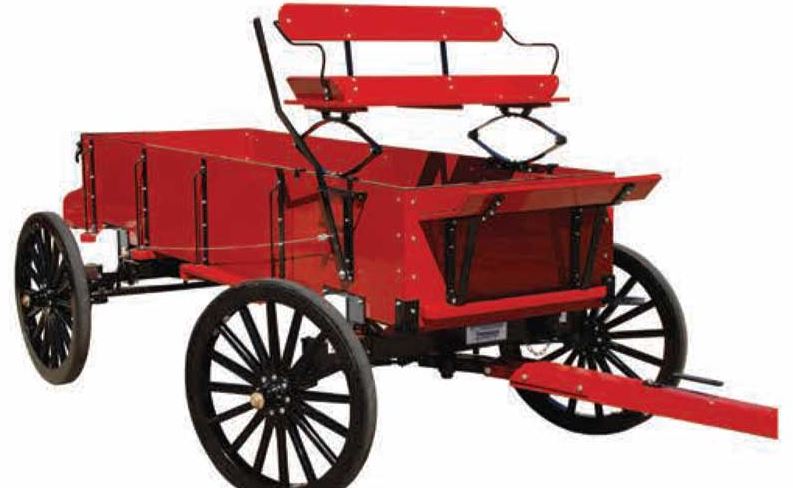
Features:
- Seat
- Rear-end gates
- Foot-board
Classic flatbed hay wagon
Hay wagons are built on a durable metal frame with main beams constructed from a 7″ steel channel.
Once it’s mounted on the running gear, the hay wagon deck rides 37″ above the ground, while the overall height of the hay wagon is 10′ 9″. Speaking of the sides, they’re made from 2″ square steel tubing with 1″ square horizontal bars.
It also comes with a flooring choice of either expanded steel or 1″ oak board (spaced at 3/4″). 43″ side openings with chains and “easy-open” handles allow for quick unloading. Finally, a 32″ fold-down “porch” on the front end offers an additional unloading point.
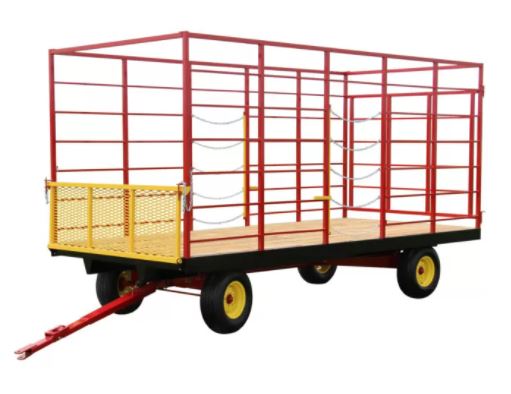
Features:
- Metal frame
- Porch
- Flooring steel/oak
Berlin Flyer Sport Wagon
The Berlin Flyer F410 Sport is the workhorse of the Berlin Flyers Wagon line, first made in 1965. These popular express wagons are made right here in Ohio using locally-sourced solid hardwoods and steel.
Each Berlin Flyer Wagon is made with a solid wood bed, painted hardwood side rails that are easily removed, and an all-steel frame that is welded and powder-coated. The Berlin Sport Wagon weight capacity is rated for up to 300 Lbs.
Finally, the express wagon is finished with non-toxic paint and varnish for your peace of mind. The Berlin F410 Sport comes with 10″ x 4″ foam-filled tires, and the wagon bed measures 36″ x 17.25″
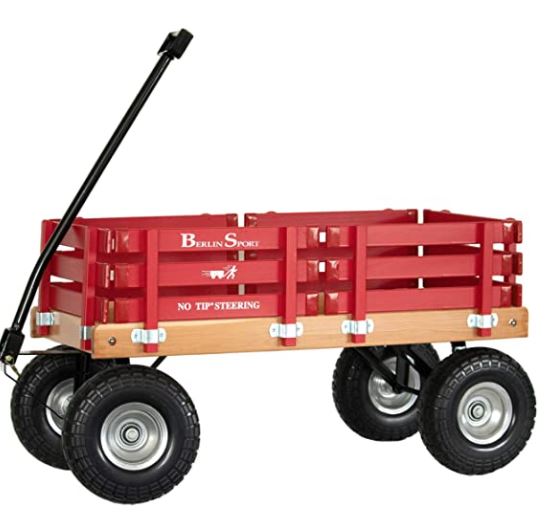
Features:
- 10″ Flat-Free Tires
- Steel Undercarriage
- Long Wooden Bed
Max Utility Tow Behind Dump Cart
The Agri-Fab, steel cart model will quickly help you transport firewood, sand, gravel, mulch, and more.
Using this cart is easier than ever, thanks to a universal hitch that easily adapts to any lawn tractor. A foot pedal adds for more accessible and more controlled dumping.
The Agri-Fab Steel Dump Cart will last you for years to come with proper care and use. Suitable for small hayrides.

Features:
- Steel bed with scratch-resistant, powder-coat paint
- Wheel bearings feature grease zerks
- 750-pound load capacity
Heavy Duty Mesh Steel Garden Cart
This is a multi-functional garden cart with meticulous workmanship and strong design sense; Its maximum load can reach 1,100 lbs., which is more than twice that of competitors; there’s nothing you cannot pull away with this practical and convenient cart.
Made fully-welded, high-quality metal, the cart body is anti-rust, solid, and durable; the All-iron mesh bed is extremely tough and not easy to break.
The casters determine the load-bearing, shock-absorption, and noise-reduction of the cart; The pneumatic tires have good elasticity, impact resistance, and noise reduction; Compared with small wheels, large wheels can adapt to various road conditions and have good load carrying advantages.
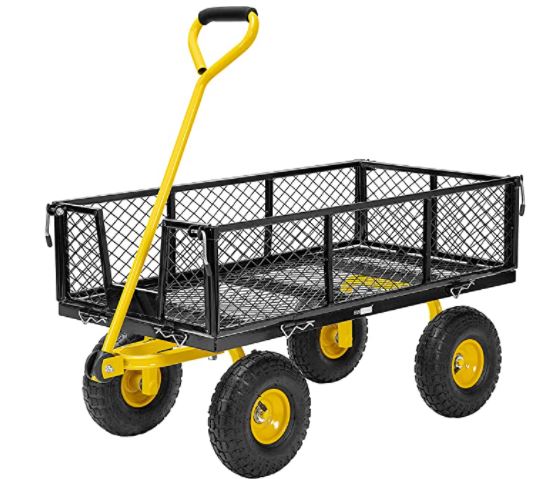
Features:
- Alloy Steel
- Flexible Handles
- Removable Sides
Any hay wagon is big enough to carry all of your harvest equipment and other tools, especially a post hole digger that is so useful.
